Dear Lunatics,
Happy Harvest Moon!
It’s the time of year when we reap what we’ve sown. And after hearing the recent news that Rolls-Royce will be designing a nuclear reactor to be placed on the Moon in 2029, I have to say I’m a little concerned about the radioactive seeds we’re sowing.
Nuclear reactors tend to produce nuclear waste, and the Rolls-Royce press release had one glaring omission: just where on the Moon are they planning to dump this radioactive refuse?
On Earth, we’ve been pushing it under the rug for decades.
The problem is that our nuclear waste sites will remain toxic for up to a million years.
How do we warn our descendants 10,000 years from now to stay away from these poisoned areas?
They won’t understand our language. Only 1,000 ago, I would have been writing to you about the “fulla mōna” (“full moon” in Old English). And their culture will be radically, inconceivably different.
Is it possible to design a comprehensible KEEP OUT sign that will endure over many millennia?
In the 1980s, the U.S. Department of Energy and a German academic journal solicited ideas from the world’s greatest minds.
Their solutions were…strange.
One expert proposed that we establish an “Atomic Priesthood,” an artificial religion run by an elite class of experts (or “priests”) who would use folklore and ritual to scare the ignorant masses away from an irradiated area with threats of a supernatural curse. Each generation, these priests would initiate a select few into the scientific truth, thereby keeping the ruse going down the centuries.
A slightly furrier option was suggested by two academics who recommended that we breed “radiation cats” that would change color in the presence of radioactive emissions. These feline Geiger counters would guide humans away from hazardous waste sites.
The environmental artist Michael Brill devised the “Landscape of Thorns,” a plan to cover a nuclear graveyard with 100-foot-tall spikes poking out of the ground in odd directions. This unnatural, forbidding spectacle would be guaranteed to make any wandering human’s blood run cold.
Environmental art has long been used to warn about the dangers of radioactivity, a fact that Brill and the other experts in the 1980s would have known had they thought to consult aboriginal communities.
In Gunbalanya in the Northern Territory of Australia, warnings of so-called Sickness Country—a patch of land where uranium deposits lurk just below the surface—have been passed down over thousands of years in rock art paintings that show figures afflicted with swollen joints.

Perhaps the most ambitious scheme—and certainly my favorite—was conceived by Philipp Sonntag, a German physicist who specialized in the dangers of atomic warfare.
Sonntag suggested that we build an artificial moon, scrawl a message across its surface, and launch it into orbit where it would remain forever visible in the night sky.
Since hearing Sonntag’s proposal, I’ve been looking askance at the Moon. What if it’s a flashing warning sign created by an extinct civilization, and instead of heeding its dire message, we’ve just been writing poems about its beauty and planting flags on its surface?
We might as well be wearing a traffic cone as a hat.
I’ve been corresponding with Philip Sonntag through email and post to Berlin. I hoped to learn more about his man-made moon concept and why he considered it a superior solution to an Earth-based installation like the “Landscape of Thorns.”
According to Sonntag, his lunar placard would remain functional on a longer timeline, even after magma had shifted continents—though he imagined by then humans would be extinct and other creatures, or visiting aliens perhaps, would be the recipients of his “comic warning.”
My communication with Mr. Sonntag was complicated by our language barrier. I couldn’t tell if it was whimsy or interplanetary formality that made him introduce himself as “officially” a human being.
“I have that in writing in my passport,” he assured me.
Something else was lost in translation. After reading my initial messages, he concluded that I was asking him to take over writing The Lunar Dispatch, an offer that he graciously accepted.
If two moon-obsessed men living less than 4,000 miles away in 2023 can’t get on the same page, do we really have any hope of accurately communicating with creatures of the distant future?
The chosen warning system would have to be truly miraculous.
So which one was selected?
None, of course.
Personally, I think this may have been for the best.
When I first sat down to design my own warning sign, I imagined a giant convoluted labyrinth, filled with dead-ends, built around a nuclear waste site. Future human tribes might send one or two brave warriors into this mysterious maze but, when those doomed and lost souls never emerged, the rest would know not to venture inside.
But on second thought, I realized that while future humans may be culturally and linguistically unrecognizable to us, human nature would remain fundamentally the same—and any person would assume that such a maze must be hiding at its center a great treasure.
Any measure we take to mark a toxic area—no matter how menacing—would only serve to draw attention to that spot and activate the fatal curiosity that lies deep in the human spirit.
Perhaps the best way to conceal a grain of sand is on a beach.
Since the dawn of the Atomic Age, the anti-nuclear movement has been roughly split into two camps: those who believe we should expose nuclear secrets, thereby leveling the playing field and negating the need for espionage and wars, and those who insist that only absolute destruction of all nuclear weapons can save us from the risk of nuclear winter and species suicide.
But a small contingent has advocated for a third option, a plan that relies on one of humanity’s most extraordinary powers—the power to forget.
What if we purposefully decided to forget how to build nuclear weapons?
The Manhattan Project depended just as much on feats of engineering design and technological skill as on physics. The most minute parts of the internal core of the atomic bomb had to be fashioned by jewelers.
Today, the pool of fully experienced nuclear weapon designers is surprisingly small; if they don’t pass on their knowledge to the next generation, our capacity to craft a nuclear warhead would fade in several short decades.
A strategy of collective amnesia seems fanciful—but so did the very idea of an atomic bomb before nuclear fission was first discovered in Berlin in 1938.
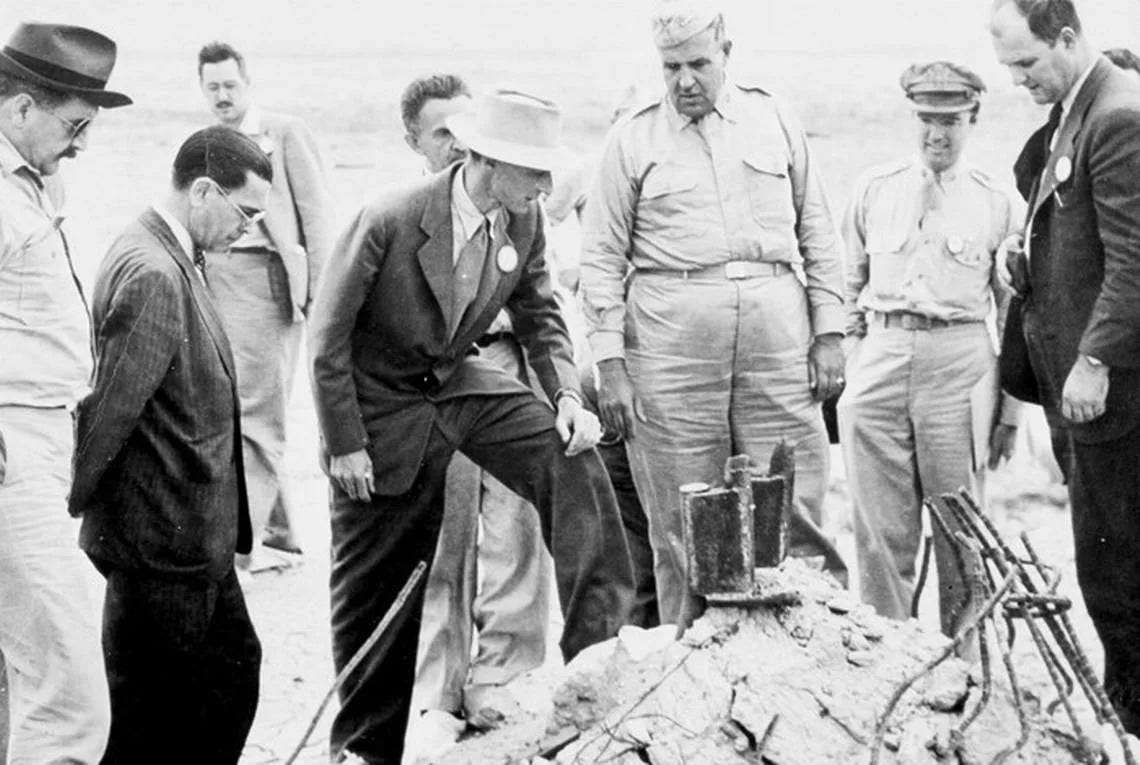
One of the greatest threats to this mass memory wipe is not a scientist but rather an artist: the sculptor, photographer, and conceptual artist Jim Sanborn.
From 1998 to 2004, Sanborn meticulously constructed a replica of the laboratory environment of the Manhattan Project.
How did he get his hands on the original equipment and even furniture used by Los Alamos National Laboratory during the 1940s?
Simple. He traveled to Los Alamos where he knocked on the doors of elderly residents and put up signs in retirement homes.
Many of the physicists who worked on the project, now in their 80s, had basements filled with pieces of bomb prototypes. Sanborn even found aluminum pusher shells being used as bird baths.
In an interview, he recalled the opening of his installation, which he titled “Critical Assembly”:
I had Los Alamos scientists who came to the show—people who had actually worked on the program and been in that room, and said it was the most chilling experience they'd ever had because it reminded them so strongly of what it was like when they were there. And so it was proven to be accurate.
At 77 years old, Jim Sanborn is past his half-life, a fact which, for a small but zealous segment of humanity, is cause for immense concern.
Prior to “Critical Assembly,” Sanborn created Kryptos, a large, scroll-like copper sculpture that stands in the courtyard of the CIA headquarters in Langley, Virginia.
Kryptos contains four encrypted texts. While the first three have been cracked, the fourth has proved impenetrable. It’s been driving cryptographers, amateur and professionals alike, crazy for 33 years.
Over the years, Sanborn has received thousands of letters and emails with incorrect decryptions of Kryptos. Some of these letters contain threats, and at least one frustrated puzzle-solver wielded a weapon, seeking closure to the Kryptos enigma that was tormenting him.
Between 2010 and 2020, Sanborn revealed four clues to the string of 97 letters that make up the fourth section of Kryptos. Decoded, the message contains the words “BERLIN,” “CLOCK,” “NORTHEAST,” and “EAST.”
Some Kryptos obsessives speculate that the passage alludes to a Berlin key, a two-sided key also known in Germany as a "Durchsteckschlüssel" or “push-through-key.”
When inserted into a keyhole, a Berlin key not only unlocks the door but juts out on the other side. Once you enter and close the door, you pull the protruding key through. Essentially, a Berlin key makes it impossible to forget to lock a door behind you.
Some believe this is the metaphorical means of deciphering Kryptos, that if the fourth section is overlayed (or pulled through) the previous three sections, the sculpture will open its secrets.
But so far no one has managed it. And the clock is ticking.
Sanborn has vowed not to release any more clues.
What happens when he dies and takes the solution to Kryptos with him?
Death is the ultimate Berlin key.
At the risk of adding to Jim Sanborn’s stuffed inbox, I wrote to him, asking how he would feel if Kryptos remained unsolved after his death.
To my surprise, he responded, “I sincerely hope Kryptos outlives me.”
I also asked him if he worried that Kryptos has an expiration date of cultural comprehension, since to the tribes of future humans picking through the rubble of our lost civilization, the artwork will not only be encrypted but utterly baffling.
According to Sandborn, a loss of cultural apprehension is already affecting his work. “There is a general reticence to take textural risk,” he lamented. “My text-based public projects are endlessly scrutinized before they are approved.”
Once again, I was reminded that we struggle to convey meaning to each other even today, let alone across unfathomable barriers of time.
As if to underline this point, Sanborn signed off with a string of symbols:
Had a radioactive cat walked across his keyboard or had Sanborn left me a coded message?
What does it mean?
Sincerely? Cordially? Take care?
I need your help, Lunatics.
Try your best to solve the code and leave potential solutions in the Comments below.
And if you have a friend who loves a good puzzle, ask them to take a crack at it.
Please make haste—it’s driving me crazy.
See you on the Hunter’s Moon!
—WD


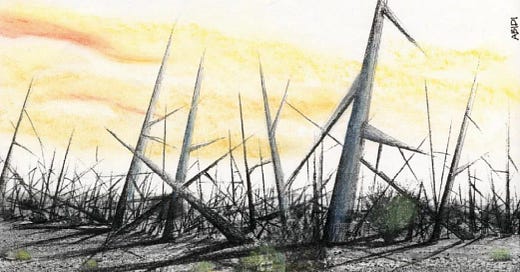


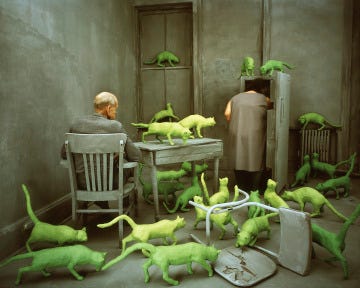


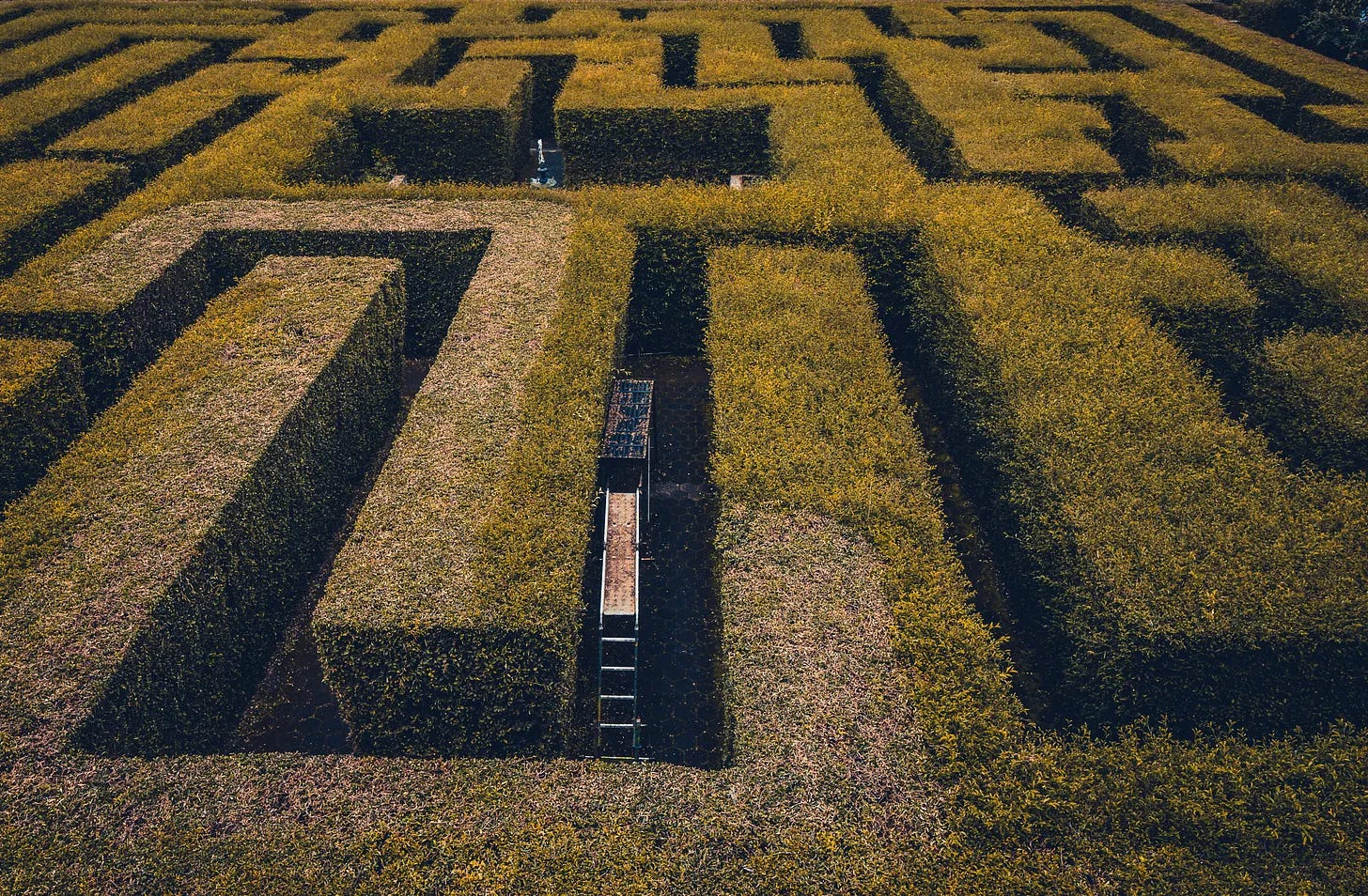
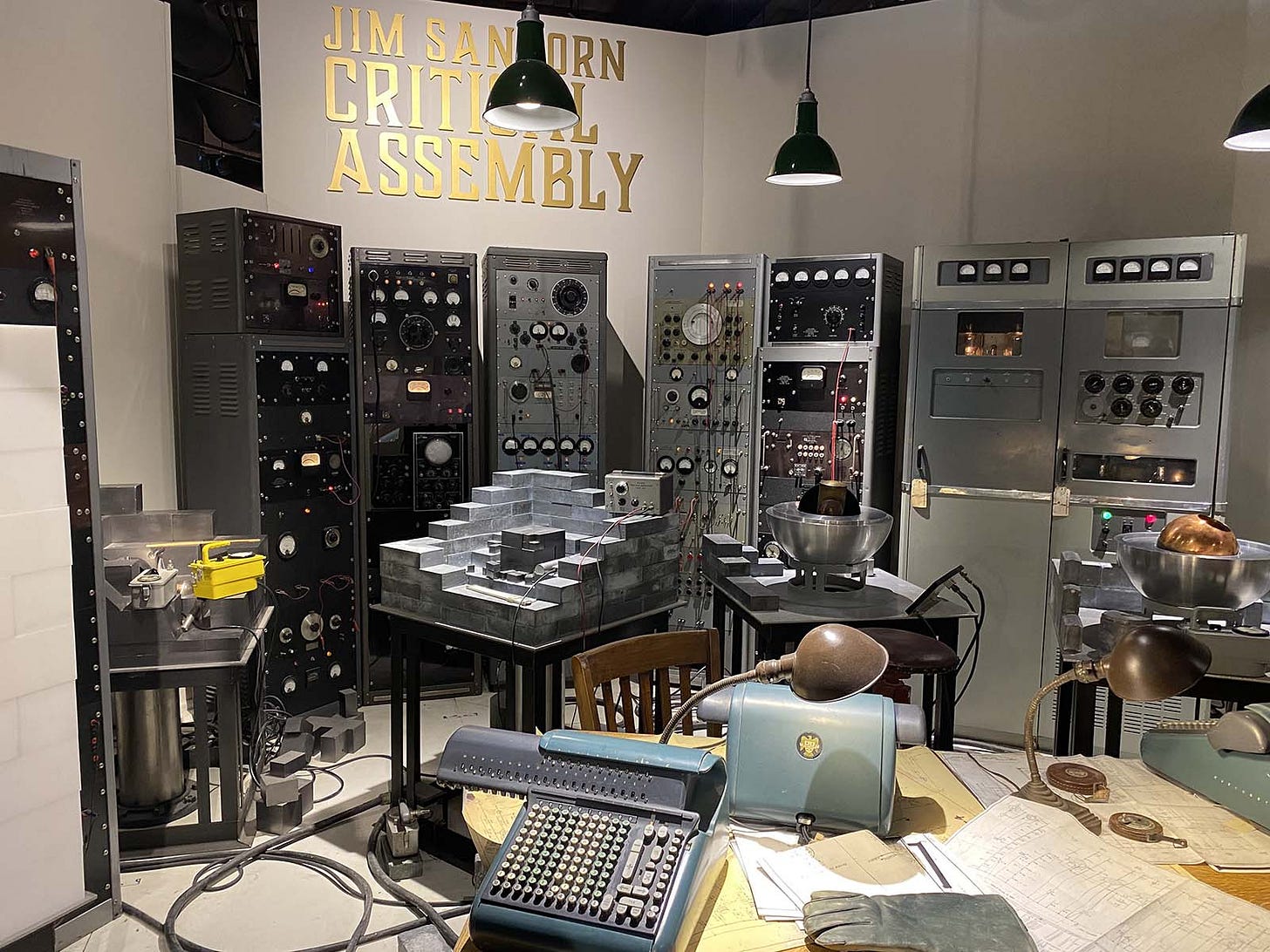
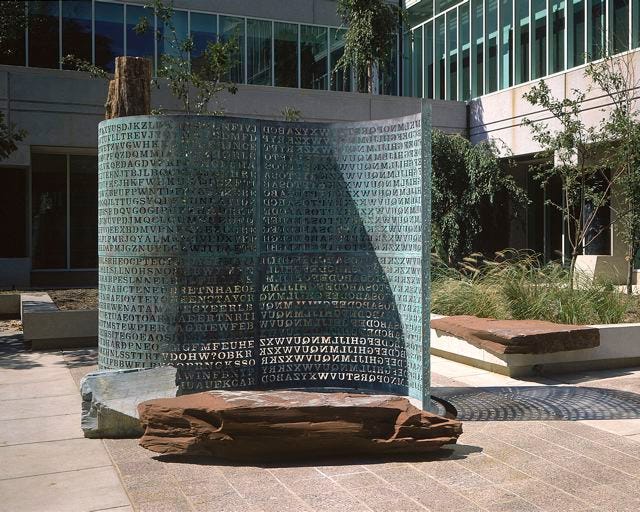


Thank you for an intriguing post!
"and activate the fatal curiosity that lies deep in the human spirit."
Was it a stand-up comic or a philosopher who first said, "Tell someone the Sun is 93,138,632 miles away today and they will believe you. Tell them that bench has just been refinished and is covered with wet paint, and they will have to touch to confirm!" 😆
Great post. I learnt a lot. And happy mid-autumn festival, as we call out here in East Asia.